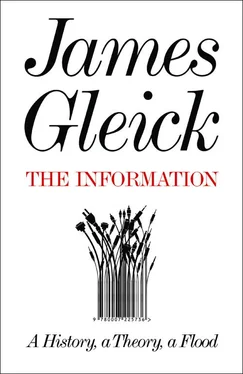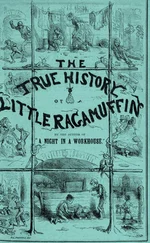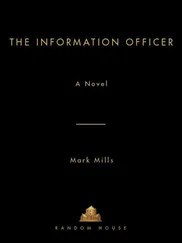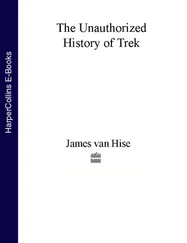Ada became a tutor for the young daughters of one of her mother’s friends. When writing to them, she signed herself, “your affectionate & untenable Instructress.” On her own she studied Euclid. Forms burgeoned in her mind. “I do not consider that I know a proposition,” she wrote another tutor, “until I can imagine to myself a figure in the air, and go through the construction & demonstration without any book or assistance whatever.” She could not forget Babbage, either, or his “gem of all mechanism.” To another friend she reported her “great anxiety about the machine.” Her gaze turned inward, often. She liked to think about herself thinking.
AUGUSTA ADA BYRON KING, COUNTESS OF LOVELACE, AS PAINTED IN 1836 BY MARGARET CARPENTER.“I CONCLUDE SHE IS BENT ON DISPLAYING THEWHOLE EXPANSE OF MY CAPACIOUS JAW BONE, UPON WHICH I THINK THE WORD MATHEMATICSSHOULD BE WRITTEN.”
Babbage himself had moved far beyond the machine on display in his drawing room; he was planning a new machine, still an engine of computation but transmuted into another species. He called this the Analytical Engine. Motivating him was a quiet awareness of the Difference Engine’s limitations: it could not, merely by adding differences, compute every sort of number or solve any mathematical problem. Inspiring him, as well, was the loom on display in the Strand, invented by Joseph-Marie Jacquard, controlled by instructions encoded and stored as holes punched in cards.
What caught Babbage’s fancy was not the weaving, but rather the encoding, from one medium to another, of patterns. The patterns would appear in damask, eventually, but first were “sent to a peculiar artist.” This specialist, as he said,
punches holes in a set of pasteboard cards in such a manner that when those cards are placed in a Jacquard loom, it will then weave upon its produce the exact pattern designed by the artist.
The notion of abstracting information away from its physical substrate required careful emphasis. Babbage explained, for example, that the weaver might choose different threads and different colors—“but in all these cases the form of the pattern will be precisely the same.” As Babbage conceived his machine now, it raised this very process of abstraction to higher and higher degrees. He meant the cogs and wheels to handle not just numbers but variables standing in for numbers. Variables were to be filled or determined by the outcomes of prior calculations, and, further, the very operations—such as addition or multiplication—were to be changeable, depending on prior outcomes. He imagined these abstract information quantities being stored in cards: variable cards and operation cards. He thought of the machine as embodying laws and of the cards as communicating these laws. Lacking a ready-made vocabulary, he found it awkward to express his fundamental working concepts; for example,
how the machine could perform the act of judgment sometimes required during an analytical inquiry, when two or more different courses presented themselves, especially as the proper course to be adopted could not be known in many cases until all the previous portion had been gone through.
He made clear, though, that information—representations of number and process—would course through the machinery. It would pass to and from certain special physical locations, which Babbage named a store , for storage, and a mill , for action.
In all this he had an intellectual companion now in Ada, first his acolyte and then his muse. She married a sensible and promising aristocrat, William King, her senior by a decade and a favorite of her mother. In the space of a few years he was elevated to the peerage as earl of Lovelace— making Ada, therefore, a countess—and, still in her early twenties, she bore three children. She managed their homes, in Surrey and London, practiced the harp for hours daily (“I am at present a condemned slave to my harp , no easy Task master”), danced at balls, met the new queen, Victoria, and sat for her portrait, self-consciously (“I conclude [the artist] is bent on displaying the whole expanse of my capacious jaw bone, upon which I think the word Mathematics should be written”). She suffered terrible dark moods and bouts of illness, including cholera. Her interests and behavior still set her apart. One morning she went alone in her carriage, dressed plainly, to see a model of Edward Davy’s “electrical telegraph” at Exeter Hall
& the only other person was a middle-aged gentleman who chose to behave as if I were the show [she wrote to her mother] which of course I thought was the most impudent and unpardonable.—I am sure he took me for a very young (& I suppose he thought rather handsome) governess. . . . He stopped as long as I did, & then followed me out.— I took care to look as aristocratic & as like a Countess as possible. . . . I must try & add a little age to my appearance. . . . I would go & see something everyday & I am sure London would never be exhausted.
Lady Lovelace adored her husband but reserved much of her mental life for Babbage. She had dreams, waking dreams, of something she could not be and something she could not achieve, except by proxy, through his genius. “I have a peculiar way of learning ,” she wrote to him, “& I think it must be a peculiar man to teach me successfully.” Her growing desperation went side by side with a powerful confidence in her untried abilities. “I hope you are bearing me in mind,” she wrote some months later, “I mean my mathematical interests. You know this is the greatest favour any one can do me.—Perhaps, none of us can estimate how great. . . .”
You know I am by nature a bit of a philosopher, & a very great speculator, —so that I look on through a very immeasurable vista, and though I see nothing but vague & cloudy uncertainty in the foreground of our being, yet I fancy I discern a very bright light a good way further on, and this makes me care much less about the cloudiness & indistinctness which is near.—Am I too imaginative for you? I think not.
The mathematician and logician Augustus De Morgan, a friend of Babbage and of Lady Byron, became Ada’s teacher by post. He sent her exercises. She sent him questions and musings and doubts (“I could wish I went on quicker”; “I am sorry to say I am sadly obstinate about the Term at which Convergence begins”; “I have enclosed my Demonstration of my view of the case”; “functional Equations are complete Will-o-the-wisps to me”; “However I try to keep my metaphysical head in order”). Despite her naïveté, or because of it, he recognized a “power of thinking . . . so utterly out of the common way for any beginner, man or woman.” She had rapidly mastered trigonometry and integral and differential calculus, and he told her mother privately that if he had encountered “such power” in a Cambridge student he would have anticipated “an original mathematical investigator, perhaps of first rate eminence.” She was fearless about drilling down to first principles. Where she felt difficulties, real difficulties lay.
One winter she grew obsessed with a fashionable puzzle known as Solitaire, the Rubik’s Cube of its day. Thirty-two pegs were arranged on a board with thirty-three holes, and the rules were simple: Any peg may jump over another immediately adjacent, and the peg jumped over is removed, until no more jumps are possible. The object is to finish with only one peg remaining. “People may try thousands of times, and not succeed in this,” she wrote Babbage excitedly.
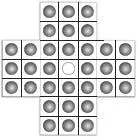
I have done it by trying & observation & can now do it at any time, but I want to know if the problem admits of being put into a mathematical Formula, & solved in this manner. . . . There must be a definite principle, a compound I imagine of numerical & geometrical properties, on which the solution depends, & which can be put into symbolic language.
Читать дальше
